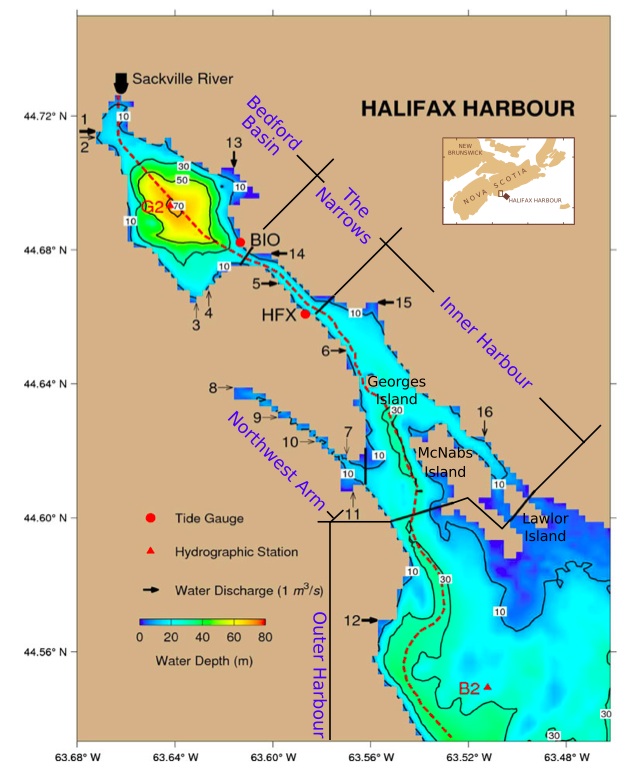Dalhousie Coastal Ocean Forecast System - DalCoast-HFX
The Dalhousie Coastal Ocean Forecast System (DalCoast-HFX) is a prototype real-time operational system for predicting physical oceanographic conditions over the eastern Canadian seaboard, with a focus on Halifax Harbour. Development of Dalcoast-HFX is funded by MEOPAR. Dalcoast-HFX is still in its experimental phase, and all contents of this site are provided for scientific purposes only. Please read the disclaimer.
Daily forecasts of oceanographic conditions (salinity, temperature, and currents at the sea surface; sea surface elevation; waves) are available for the following regions:
L1: ECS -- The eastern Canadian shelf from the Labrador Sea to the Gulf of Maine-Bay of Fundy system
L2: GSL-SS-GOM -- The Gulf of St. Lawrence, the Scotian Shelf, and the Gulf of Maine-Bay of Fundy system
L3: OSS -- Outer Scotian Shelf
L4: ISS -- Inner Scotian Shelf
L5: HH -- Halifax Harbour
Please note that some forecasts may not be available for each region.

DalCoast-HFX is being developed by Dr. Jinyu Sheng's research group at Dalhousie University's Department of Oceanography. It is based on DalCoast, which was developed by Dr. Keith Thompson's research group in the same department. Additional information on Dalcoast-HFX and its domains can be found in the description page. Our partners include the regional office of Lloyd's Register, and our potential stakeholders include the Halifax Port Authority.
Predictions of ocean surface waves (wave heights, directions, and periods) are produced by a nested-grid wave modelling system developed by Dr. Will Perrie's research group at the Bedford Institute of Oceanography (BIO). The wave modelling system is based on the wave models WAVEWATCH III and SWAN.
About Halifax Harbour
Halifax Harbour is one of the world's largest ice-free natural harbours and is located on the Atlantic coast of Nova Scotia, Canada in the Halifax Regional Municipality. It has been the subject of several observational studies, due in part to its socio-economic importance but also its proximity to the Bedford Institute of Oceanography and Dalhousie University that makes it a convenient testbed for the development of observation technologies and numerical prediction systems.

